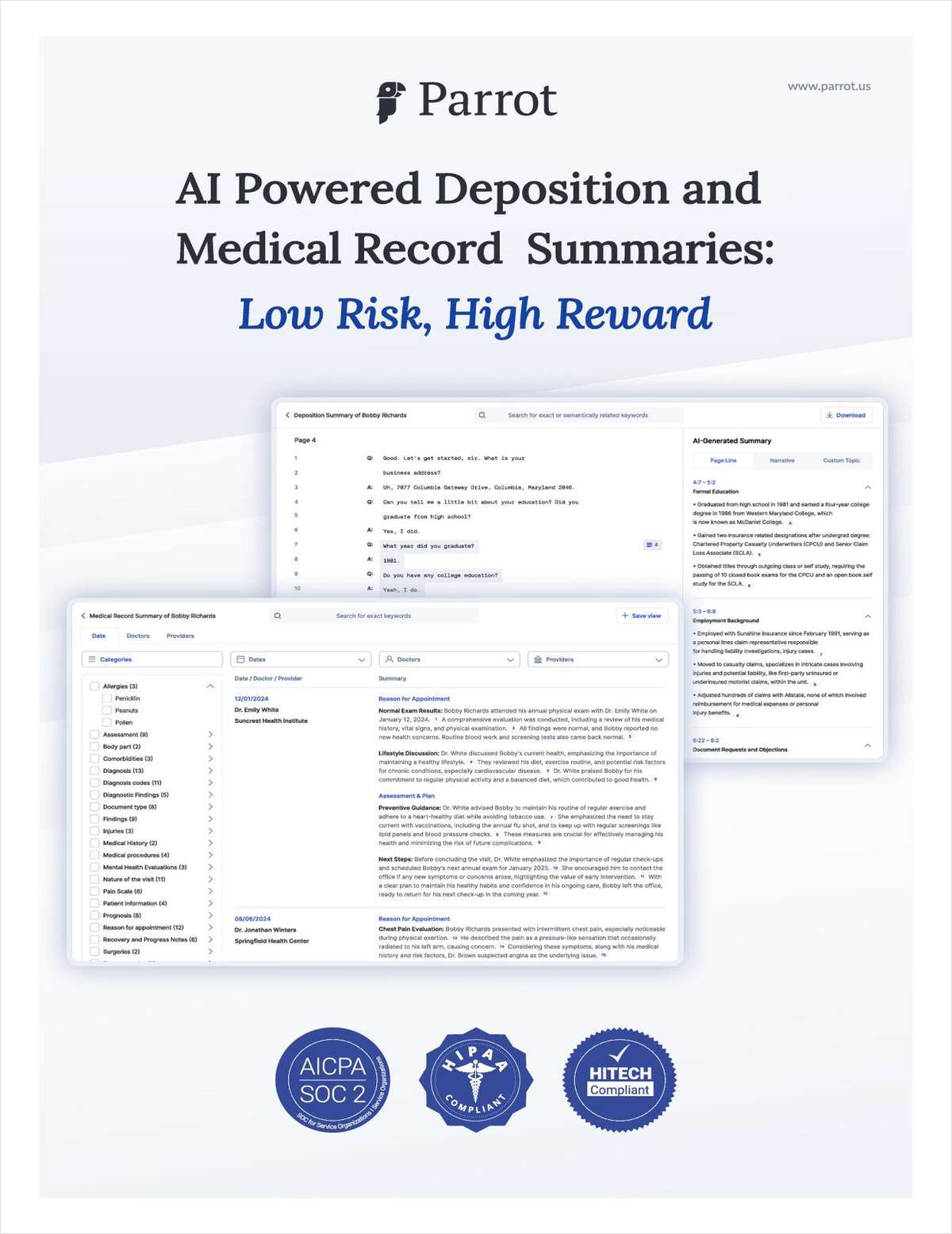UK Top 50 Results: Why PEP Has Slowed and What Firms Should Do About It
There are several ways that firms can improve their PEP numbers, but some are easier than others.
September 04, 2019 at 12:42 PM
7 minute read
With rising competition and discerning buyers, it has never been more difficult for U.K. firms to increase or maintain their profit per equity partner (PEP). This pressure continues to plague firms, which are all too aware that a strong PEP figure helps them to attract and retain the best talent.
Across the U.K. top 50, average PEP remained largely static last year at £750,000. This represented no more than a 0.2 percentage point rise to 4.3 percent, and compares to 12 percent growth back in 2016-17.
Yet while there are a variety of ways a firm can look to boost PEP, the most efficient mechanism is perhaps more straightforward than firms currently think.
Revenue per lawyer
The most talked-about path to increase PEP is to focus on increasing revenue per lawyer (RPL). Firms can seek to achieve this growth in a variety of ways. This includes increasing worked hours and utilisation rates or realisation rates. While these levers can all boost a firm's RPL, the most potent lever is to simply increase rates. Increasing prices – which most often means increasing hourly rates – is the most rapid and straightforward path to increasing RPL.
During the last five years, average RPL across the U.K. top 50 has increased by 13 percent. Although having the appearance of a promising trend, this is counteracted by the fact that the rate of this growth has slowed. In fact, last year, average RPL across the top 50 firms grew by just 1 percent, marking the second successive year of slower growth.
An obvious reason behind this slowdown is the combination of headcount growth (with total footprint across the top 50 increasing by 8.5 percent last year) and sluggish revenue growth. Collectively, the former suggests that U.K. firms are experiencing a demand in legal services, while the latter indicates that this demand is not translating into meaningful revenue growth.
Reasons for this are varied. One possible explanation is client pushback towards rate increases. Firms don't have the same pricing power they once did. If the pricing power is weaker, it means firms could be doing the same amount of work (i.e. there is still the demand side) but it's not there on the revenue side. The growth in alternative fee arrangements and dwindling legal spend across in-house legal teams illustrate this.
Alternatively, another possible explanation is that the demand side is still there, but law firms are not capturing this demand – someone else is. This points towards wider changes that are currently occurring within the U.K. legal market, namely the increasing presence of alternative legal service providers and other market disruptors such as the Big Four. The vendor landscape has changed and as it has done so, it has fundamentally reshaped the options that clients now have.
U.K. firms appear to be being pressurised on the RPL side, which is consequently impacting upon PEP growth. Clients are pushing back, there are alternatives and there is more competition. This has led to difficulties in increasing rates and keeping utilisation high. This demonstrates the ongoing difficulties for firms in keeping RPL marching up at a rapid pace both in the now and also in the future as the legal landscape continues to evolve.
Cost per lawyer
The next path to higher PEP is to reduce costs. However, across the U.K. top 50, average cost per lawyer (CPL) has increased by 8 percent since 2014. This growth has derived from, among other things, associate salary increases, process improvements and aggressive lateral hiring activity. International growth has also played a part, with a number of firms increasing real estate overheads through the addition of international offices.
Encouragingly, last year marked the third successive year in which average CPL growth across the U.K. top 50 has slowed – an indication of the efficiency measures some UK firms have put in place to reduce their cost base. This includes investment in technology, low-cost service centres and office consolidation and withdrawal in unprofitable locations.
Even though CPL growth appears to be slowing, the figure is nonetheless still growing and for as long as it grows, it will continue to act as a drag upon PEP. A potentially worrying trend across the U.K. top 50 is the 8 percent growth rate of CPL during the last five years, in comparison to 13 percent RPL growth across the same period. Firms will want to make sure that the possibility of CPL growth outpacing RPL growth does not begin to present itself. It also raises ongoing questions over sustainability, particularly in the approach of firms in the lateral hiring market, in addition to associate pay hikes and higher headcounts.
Leverage reduction
The last path to boost a firm's PEP is to increase the firm's leverage, by either hiring more associates or shifting the structure of the partnership to include more non-equity partners and fewer equity partners.
The U.K. top 50 have complied with this to some extent, with the number of associates and non-equity partners increasing by 22 percent and 6 percent respectively. However, across the same period, the number of equity partners has grown by 12 percent. This has impacted upon overall leverage, which since 2014 has reduced by 3 percent. For the top 50 as a whole, leverage currently stands at 6.0 percent.
This trend continued into last year, with the number of associates and non-equity partners both increasing along with the number of equity partners. This continued to act as an impediment upon overall leverage, which declined by 2 percent. This decline, together with RPL slowdown and CPL growth, have collectively contributed to a subsequent slowdown in PEP.
Which is best?
Of the mechanisms relied upon to improve PEP, firms should arguably be placing greater emphasis on increasing leverage – certainly more than they currently are. As mentioned, seeking to rely on the alternative levers of RPL and CPL is likely to prove difficult. In the case of RPL, ongoing barriers include competition from market disruptors and shifts in demand share, while unavoidable investment in technology is one of a number of obstacles currently impacting upon the growth in costs.
Although increasing leverage has obstacles of its own, these can be more easily overcome than through seeking to overcome the obstacles associated with RPL and CPL. On the other side of the Atlantic, U.S. firms are currently ahead of the game, with a number already making use of leverage by tweaking their partnership models toward one of increased non-equity partners, while at the same time keeping equity ranks static. During the last five years, the total number of equity partners across the Am Law 100 has increased by just 2 percent, with the number of non-equity partners growing by 13 percent. This, together with a 9 percent increase in associate leverage, has contributed to a 19 percent uptick in PEP.
With firms needing to grow PEP to be competitive in the lateral hiring market for partner talent, increased leverage may be one of the few mechanisms firms now have that can easily be relied upon.
For a detailed breakdown of profit per equity partner (PEP) figures across the U.K.'s top 50 firms, as well as revenue, headcount and leverage figures see the full rankings available through ALM Intelligence's Legal Compass.
This content has been archived. It is available through our partners, LexisNexis® and Bloomberg Law.
To view this content, please continue to their sites.
Not a Lexis Subscriber?
Subscribe Now
Not a Bloomberg Law Subscriber?
Subscribe Now
NOT FOR REPRINT
© 2025 ALM Global, LLC, All Rights Reserved. Request academic re-use from www.copyright.com. All other uses, submit a request to [email protected]. For more information visit Asset & Logo Licensing.
You Might Like
View All
ALM Market Analysis Report Series: Nashville's Rapid Growth Brings Increased Competition for Law Firms
Trending Stories
- 1The Law Firm Disrupted: Scrutinizing the Elephant More Than the Mouse
- 2Inherent Diminished Value Damages Unavailable to 3rd-Party Claimants, Court Says
- 3Pa. Defense Firm Sued by Client Over Ex-Eagles Player's $43.5M Med Mal Win
- 4Losses Mount at Morris Manning, but Departing Ex-Chair Stays Bullish About His Old Firm's Future
- 5Zoom Faces Intellectual Property Suit Over AI-Based Augmented Video Conferencing
Who Got The Work
J. Brugh Lower of Gibbons has entered an appearance for industrial equipment supplier Devco Corporation in a pending trademark infringement lawsuit. The suit, accusing the defendant of selling knock-off Graco products, was filed Dec. 18 in New Jersey District Court by Rivkin Radler on behalf of Graco Inc. and Graco Minnesota. The case, assigned to U.S. District Judge Zahid N. Quraishi, is 3:24-cv-11294, Graco Inc. et al v. Devco Corporation.
Who Got The Work
Rebecca Maller-Stein and Kent A. Yalowitz of Arnold & Porter Kaye Scholer have entered their appearances for Hanaco Venture Capital and its executives, Lior Prosor and David Frankel, in a pending securities lawsuit. The action, filed on Dec. 24 in New York Southern District Court by Zell, Aron & Co. on behalf of Goldeneye Advisors, accuses the defendants of negligently and fraudulently managing the plaintiff's $1 million investment. The case, assigned to U.S. District Judge Vernon S. Broderick, is 1:24-cv-09918, Goldeneye Advisors, LLC v. Hanaco Venture Capital, Ltd. et al.
Who Got The Work
Attorneys from A&O Shearman has stepped in as defense counsel for Toronto-Dominion Bank and other defendants in a pending securities class action. The suit, filed Dec. 11 in New York Southern District Court by Bleichmar Fonti & Auld, accuses the defendants of concealing the bank's 'pervasive' deficiencies in regards to its compliance with the Bank Secrecy Act and the quality of its anti-money laundering controls. The case, assigned to U.S. District Judge Arun Subramanian, is 1:24-cv-09445, Gonzalez v. The Toronto-Dominion Bank et al.
Who Got The Work
Crown Castle International, a Pennsylvania company providing shared communications infrastructure, has turned to Luke D. Wolf of Gordon Rees Scully Mansukhani to fend off a pending breach-of-contract lawsuit. The court action, filed Nov. 25 in Michigan Eastern District Court by Hooper Hathaway PC on behalf of The Town Residences LLC, accuses Crown Castle of failing to transfer approximately $30,000 in utility payments from T-Mobile in breach of a roof-top lease and assignment agreement. The case, assigned to U.S. District Judge Susan K. Declercq, is 2:24-cv-13131, The Town Residences LLC v. T-Mobile US, Inc. et al.
Who Got The Work
Wilfred P. Coronato and Daniel M. Schwartz of McCarter & English have stepped in as defense counsel to Electrolux Home Products Inc. in a pending product liability lawsuit. The court action, filed Nov. 26 in New York Eastern District Court by Poulos Lopiccolo PC and Nagel Rice LLP on behalf of David Stern, alleges that the defendant's refrigerators’ drawers and shelving repeatedly break and fall apart within months after purchase. The case, assigned to U.S. District Judge Joan M. Azrack, is 2:24-cv-08204, Stern v. Electrolux Home Products, Inc.
Featured Firms
Law Offices of Gary Martin Hays & Associates, P.C.
(470) 294-1674
Law Offices of Mark E. Salomone
(857) 444-6468
Smith & Hassler
(713) 739-1250











